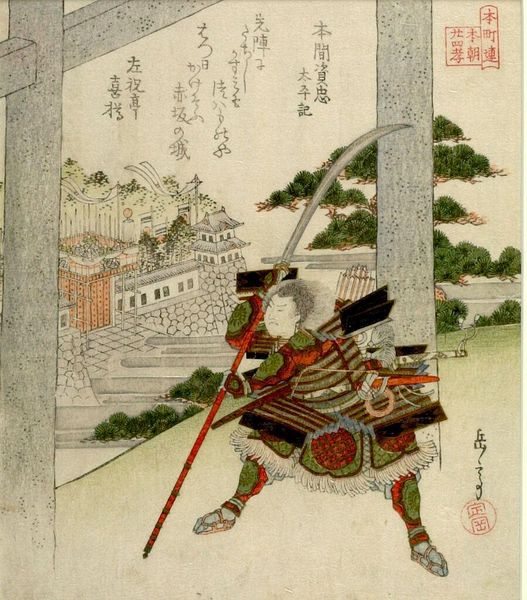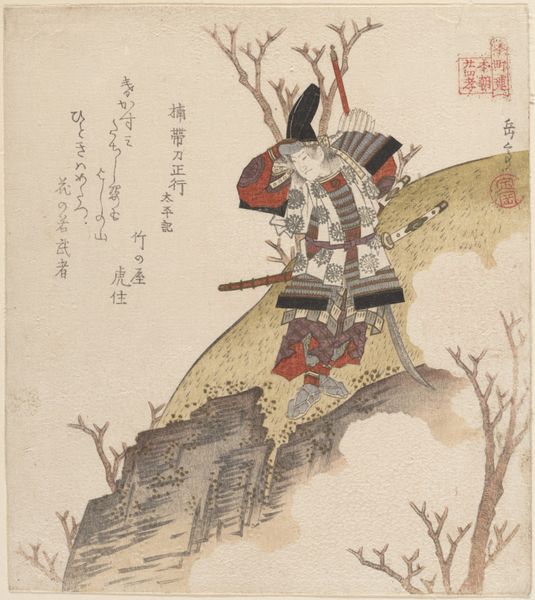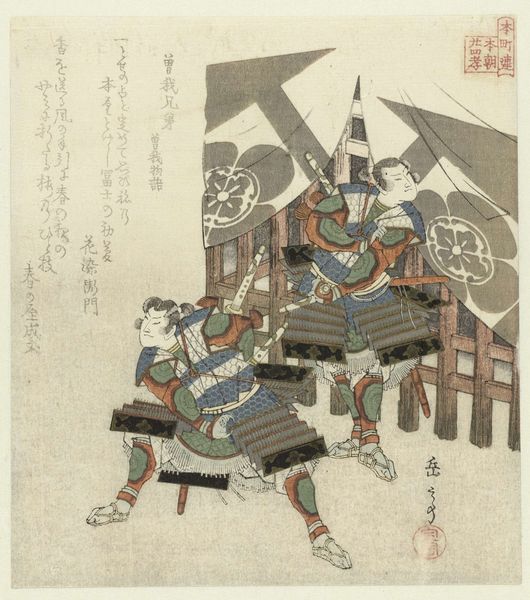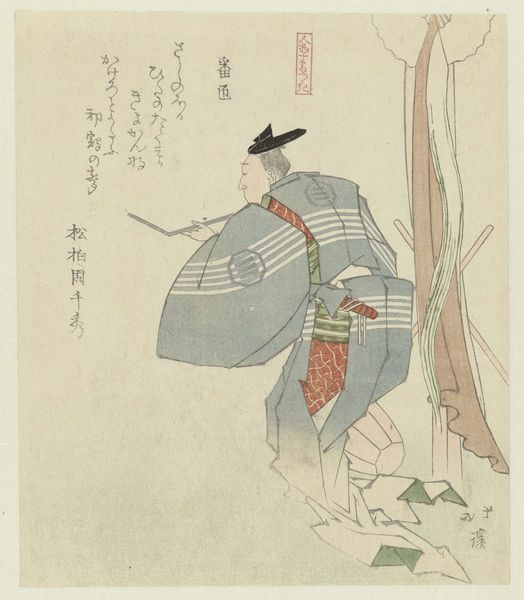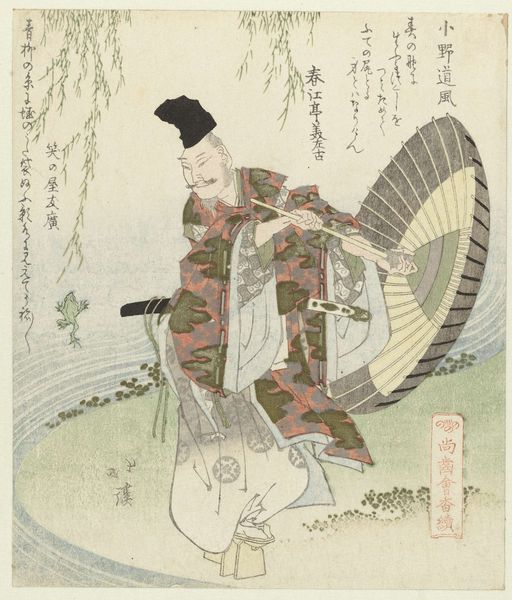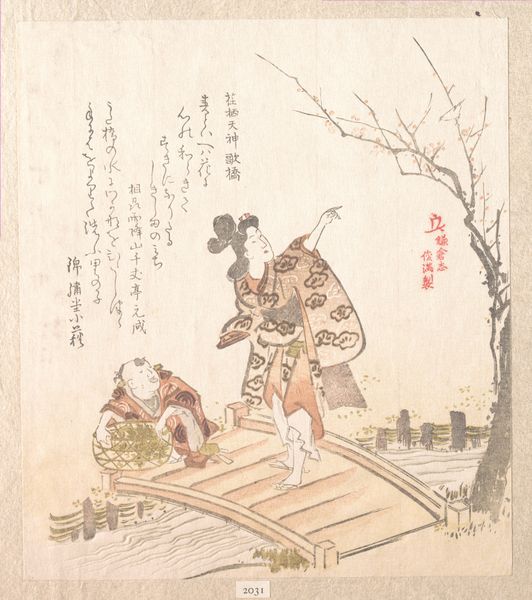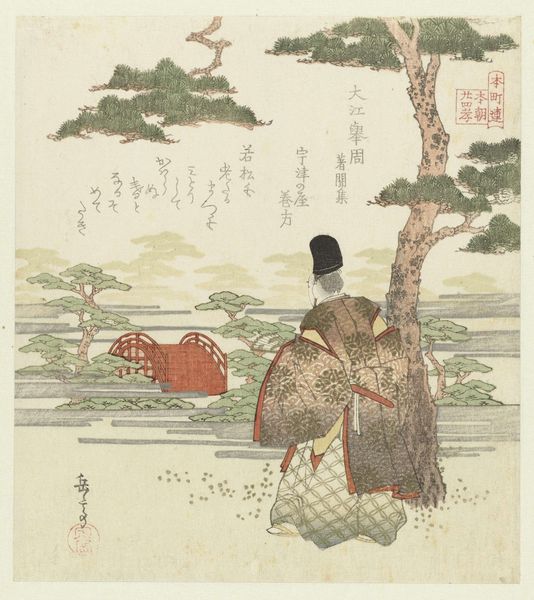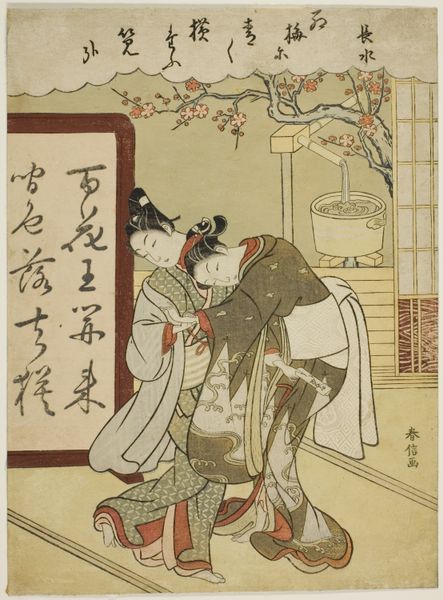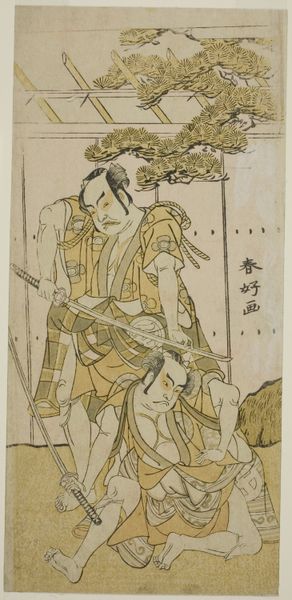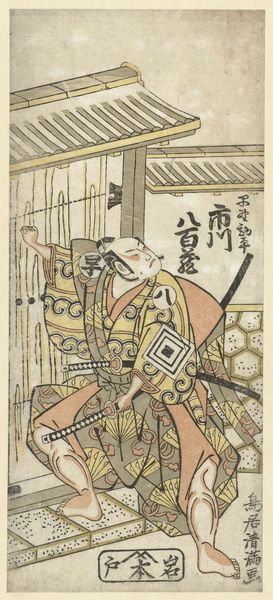
Twenty-four Japanese examples of filial piety for the Honchôren c. 1821
0:00
0:00
yashimagakuteiwudaoyueting
Rijksmuseum
print, woodblock-print
#
narrative-art
# print
#
asian-art
#
landscape
#
ukiyo-e
#
figuration
#
woodblock-print
Dimensions: height 198 mm, width 179 mm
Copyright: Rijks Museum: Open Domain
Editor: So, this woodblock print, "Twenty-four Japanese examples of filial piety for the Honchōren," created around 1821 by Yashima Gakutei, depicts a warrior… something about the rigid pose against that peaceful landscape creates an interesting tension. What are your initial thoughts on this work? Curator: The tension you observe is precisely what draws me in. Looking at it historically, ukiyo-e prints like this were not just aesthetic objects; they served a crucial public function. Prints circulated stories and ideals. The choice to depict a story of filial piety – essentially honoring one's familial duties – suggests the importance of those values within the social fabric. Notice how this image almost seems staged. It begs the question: For whom, and why, was Gakutei creating this image? Editor: "Staged," interesting. Because I almost get a sense of, well, action? Even a bit of drama... it does makes me wonder. Do you see any influence of the cultural and political climate from the time period in the composition? Curator: Absolutely. Think about the patronage of arts during the Edo period. The warrior class often supported art that legitimized their power, encoding ideals of loyalty, courage, and duty into accessible imagery for the masses. While superficially illustrating filial duty, might this also indirectly serve the ruling class? Notice the warrior is outside of the city - is that significant, maybe contrasting rural values vs urban values? Editor: So, while it showcases a personal virtue, its public role served a potentially wider, even political, agenda? It’s interesting to consider the subtle power dynamics embedded within these seemingly straightforward prints. Thanks so much! Curator: It was my pleasure! Considering artwork as objects circulating in a system, and thus understanding their multiple functions and social context, unlocks so many interesting avenues for art historical inquiry.
Comments
No comments
Be the first to comment and join the conversation on the ultimate creative platform.
